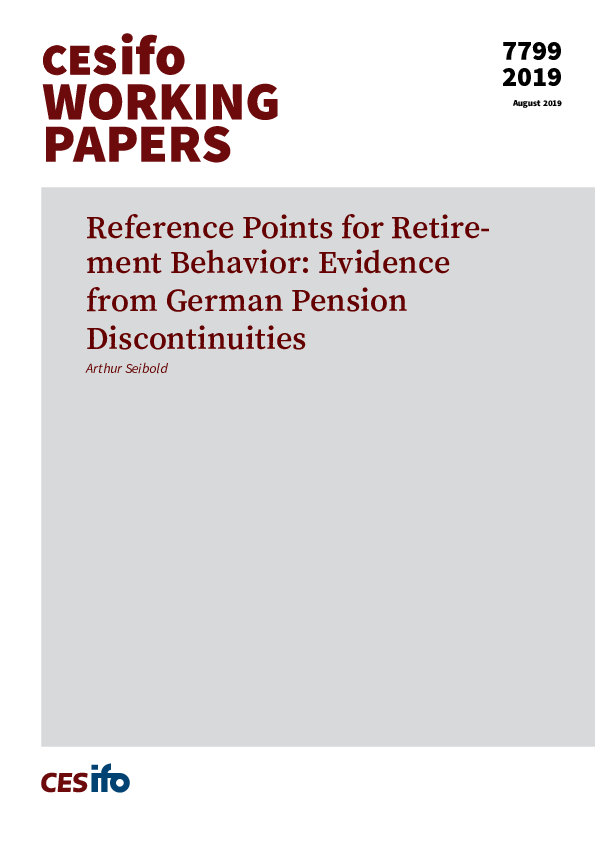Reference Points for Retirement Behavior: Evidence from German Pension Discontinuities
CESifo, Munich, 2019
CESifo Working Paper No. 7799

This paper documents and analyzes an important and puzzling stylized fact about retirement behavior: the large concentration of job exits at specific ages. In Germany, almost 30% of workers retire precisely in the month when they reach one of three statutory retirement ages, although there is often no incentive or even a disincentive to retire at these thresholds. To study what can explain the concentration of retirements around statutory ages, I use novel administrative data covering the universe of German retirees, and I exploit unique variation in financial retirement incentives as well as statutory ages across individuals in the German pension system. Measuring retirement bunching responses to 644 different discontinuities in pension benefit profiles, I first document that financial incentives alone fail to explain retirement patterns in the data. Second, I show that there is a large direct effect of “presenting” a threshold as a statutory retirement age. Further evidence on mechanisms suggests the framing of statutory ages as reference points for retirement as a potential explanation. A number of alternative channels including firm responses are also discussed but they do not seem to drive the results. Finally, structural bunching estimation is employed to estimate reference point effects. Counterfactual simulations highlight that shifting statutory ages via pension reforms can be an effective policy to increase actual retirement ages with a positive fiscal impact.
Public Finance